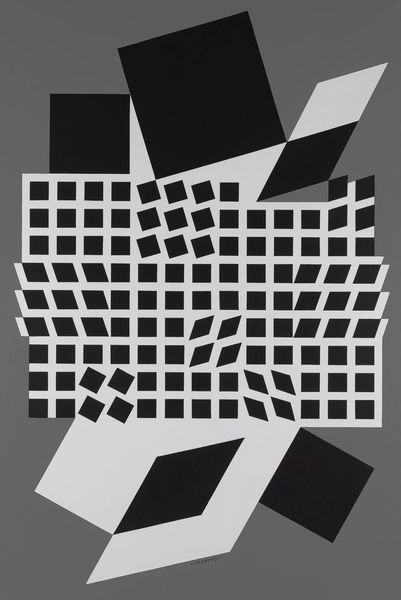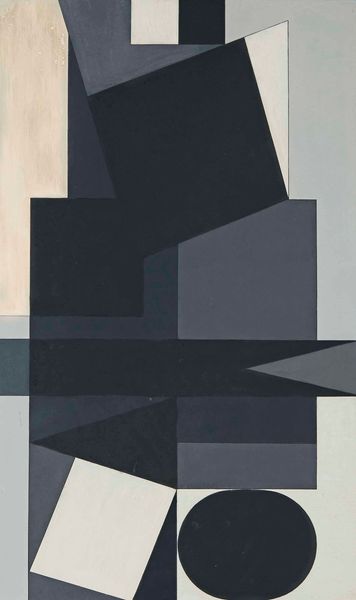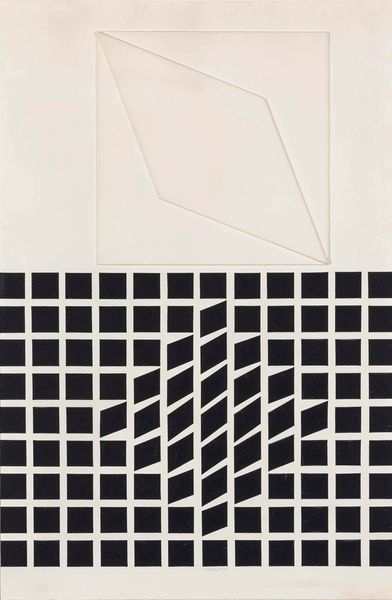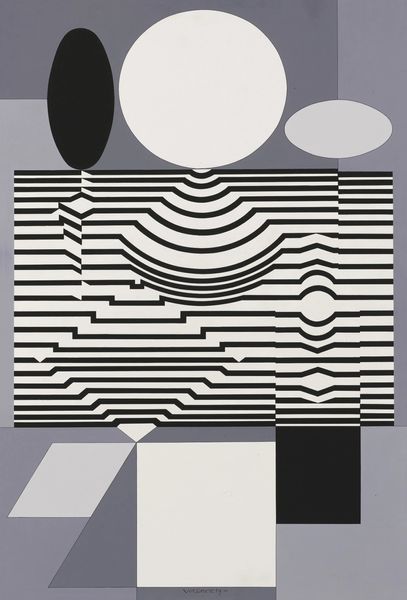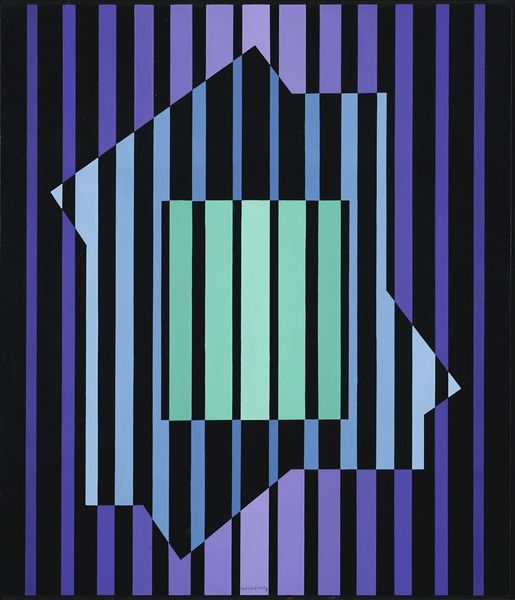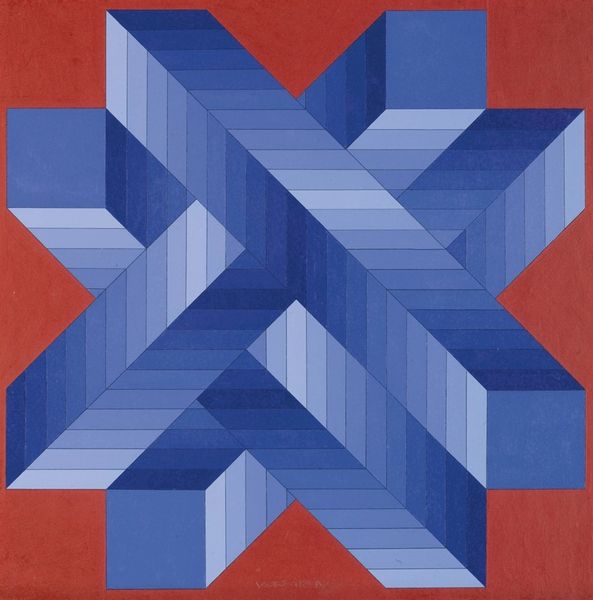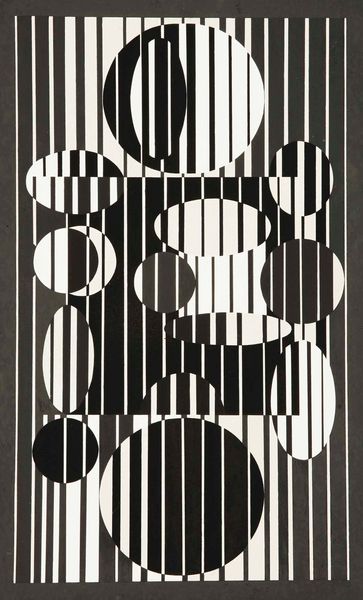
acrylic-paint
#
random pattern
#
op-art
#
colour-field-painting
#
acrylic-paint
#
abstract
#
geometric pattern
#
subtle pattern
#
abstract pattern
#
minimal pattern
#
geometric
#
simple pattern
#
abstraction
#
pattern repetition
#
layered pattern
#
funky pattern
#
combined pattern
#
modernism
#
hard-edge-painting
Copyright: Modern Artists: Artvee
Editor: This is Victor Vasarely’s "Uijain-Gris," painted between 1955 and 1973 using acrylic. The various shades of gray definitely give off an illusionistic, almost unsettling feeling. How do you interpret this work? Curator: Well, consider the era. Post-war anxieties fueled artistic exploration. Vasarely, aligning with Op Art, was fascinated by how geometric forms could play tricks on the eye and challenge our perception. Do you see how the gray palette, seemingly simple, creates a dynamic tension? Editor: Yes, the contrast really pops! It makes you question what's truly in the foreground and background. Were people receptive to this in its time, considering it moves away from traditional subjects? Curator: Initially, perhaps not universally. Remember, though, museums and galleries were actively shaping the public's understanding of abstract art. Institutions showcased artists like Vasarely, legitimizing and popularizing this break from representation. They were pivotal in constructing the narrative of modernism. Was it, in part, a socio-political message to break free from old orders? Editor: That makes a lot of sense. So, the galleries and museums helped construct the legacy we see today, right? It’s a great example of how culture is received so differently with or without these institutions’ acceptance. Curator: Precisely. And even now, its continued presence in museum collections affects its interpretation. Knowing this was made during the Cold War shapes my viewing. We can ask: what social and historical forces give a pattern meaning? Editor: So, it's more than just aesthetics, it’s social history on canvas! I never really thought about the art world's role that way. Curator: Indeed, thinking of how societal structures and presentation impact our appreciation opens a new level of understanding!
Comments
No comments
Be the first to comment and join the conversation on the ultimate creative platform.
